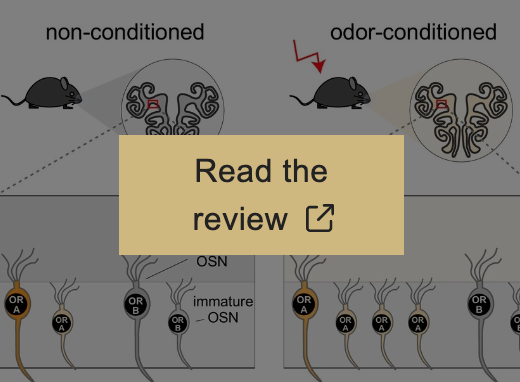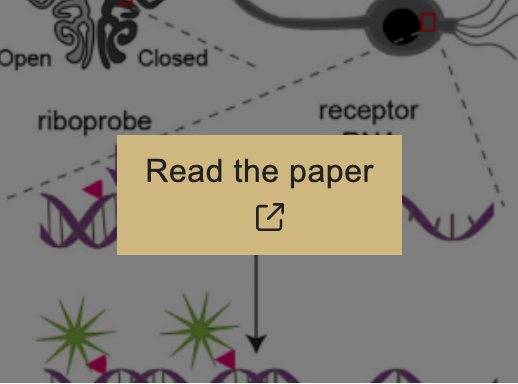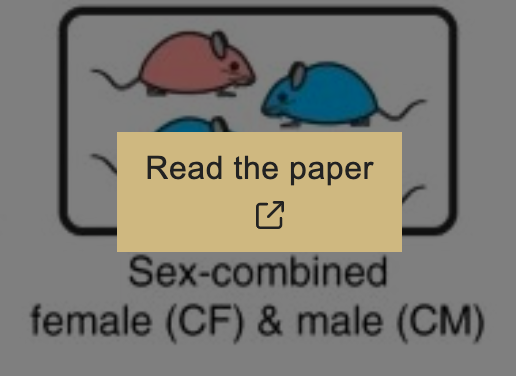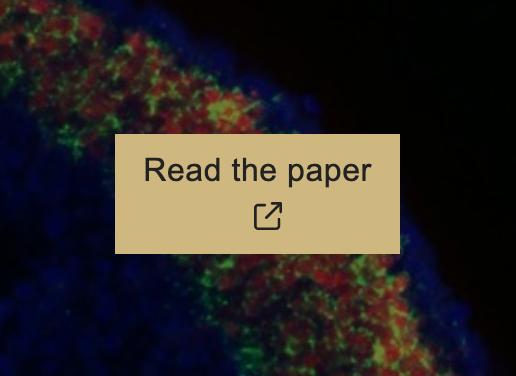Santoro Lab
Santoro Lab
Santoro Lab
Santoro Lab
Selected Publications
In mice, discrete odors can selectively promote the neurogenesis of sensory neuron subtypes that they stimulate
Kawsar Hossain, Madeline Smith, Karlin E. Rufenacht, Rebecca O'Rourke, Stephen W. Santoro
June 18, 2025
We have found that exposure to male and musk odors can accelerate the birthrates of responsive OSNs, revealing that certain odor experiences can selectively "amplify" specific OSN subtypes.
Hossain, 2025
(pdf)
7377 KB
REVIEW | The influence of olfactory experience on the birthrates of olfactory sensory neurons with specific odorant receptor identities
Karlin E. Rufenacht, Alexa J. Asson, Kawsar Hossain, Stephen W. Santoro
June 18, 2024
Here we review evidence and consider mechanistic and functional implications of the prospect that specific olfactory experiences (deprivation, enrichment, conditioning, and injury recovery) can regulate olfactory sensory neurogenesis rates in a subtype-selective manner.
Rufenacht, 2024 - PDF
(pdf)
2128 KB
A histological protocol for quantifying the birthrates of specific subtypes of olfactory sensory neurons in mice
Kawsar Hossain, Madeline Smith, Stephen W. Santoro
July 13, 2023
Here, we present a protocol to quantify the birthrates of specific neuron subtypes via the simultaneous detection of corresponding receptor mRNAs and 5-ethynyl-20-deoxyuridine.
Hossain, 2023 - PDF
(pdf)
8116 KB
Olfactory stimulation regulates the birth of neurons that express specific odorant receptors
Carl J. van der Linden, Pooja Gupta, Ashraful Islam Bhuiya, Kelci R. Riddick, Kawsar Hossain, Stephen W. Santoro
October 6, 2020
Here, using histological, single-cell, and targeted affinity purification approaches, we show that closing one nostril in mice selectively reduces the number of newly generated OSNs of specific subtypes.
6335 KB
Sex separation induces differences in the olfactory sensory receptor repertoires of male and female mice
Carl van der Linden, Susanne Jakob, Pooja Gupta, Catherine Dulac & Stephen W. Santoro
December 4, 2018
Here we investigate how the mouse olfactory sensory receptor repertoire changes as a function of exposure to odors emitted from members of the opposite sex, which are highly complex and sexually dimorphic.
3113 KB
The activity-dependent histone variant H2BE modulates the life span of olfactory neurons
Stephen W. Santoro, Catherine Dulac
December 13, 2012
We show that H2BE expression is reduced by sensory activity and that it promotes neuronal cell death, such that inactive olfactory neurons display higher levels of the variant and shorter life spans.
Santoro, 2012 - PDF
(pdf)
10225 KB






